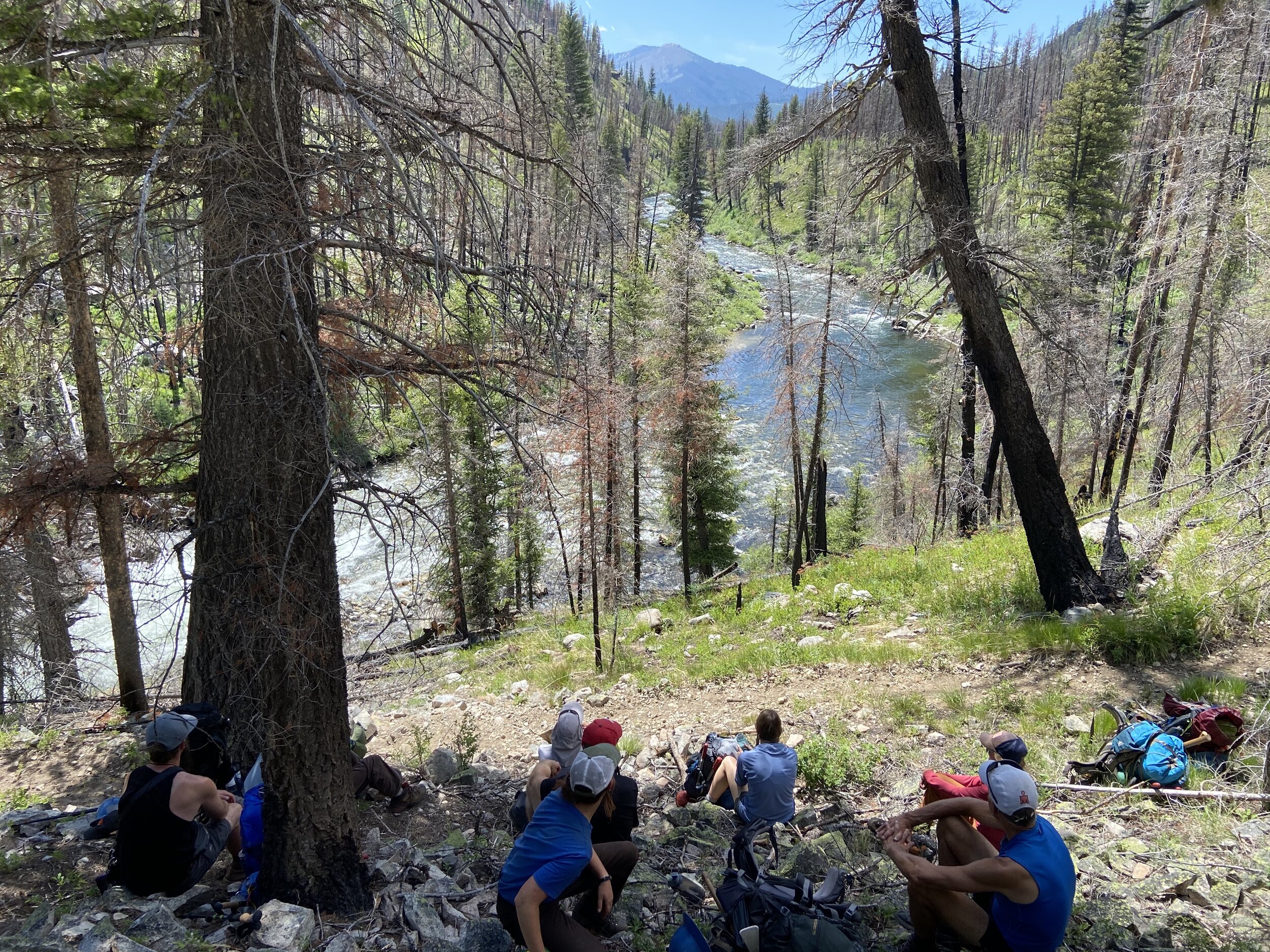Kate Wilson
Wilderness Ranger Fellow
St. Mary’s Peak Volunteer Hitch
July 2- July 4
Bitterroot National Forest | Selway-Bitterroot Wilderness
As I made my drive from Iowa to Montana, I watched the landscape transform before my eyes. The sights I saw were largely unfamiliar, but that did not frighten me. I was excited to trade the rolling, gentle hills of my home state for the mountains and canyons of Montana. Even more, I was excited to absorb myself in learning about all the plants the state had to offer.
My first day in Missoula, I took myself on a short little hike and fell in love with all the wildflowers I saw. I pulled out my phone, opened my plant identification app, and committed myself to learning just three of the flowers I saw. Silky lupine, arrowleaf balsamroot, western gromwell. Later during our weeks of training, I bonded with my crew leader over our love of botany. Throughout the summer, she has taught me how to identify so many other wonderful flora. Indian paintbrush, wild onion, glacier lily, calypso orchid, trillium, and more. I was thrilled to see some species I recognized from Iowa’s prairies, too. Prairie and woodland phlox, Mullan, yarrow, wild ginger.
The Wilderness boundary sign at St. Mary’s trail.
A view of the St. Mary’s Peak Fire Lookout.
By the time I embarked on my third hitch – the crowd-favorite, St. Mary’s Peak volunteer project –I had a slowly growing wealth of plant knowledge under my belt. As we drove to the trailhead, I saw some familiar, and some unfamiliar, wildflowers. But I did not truly question what all these unfamiliar flowers were. It was not until I was hiking up the trail with a volunteer and she said to me between heavy breaths “wow, there are so many wildflowers up here. It’s amazing,” that I realized I had lost some of my curiosity. I had gotten lost in the rhythm of the work – hike, cut, hike, cut, hike, cut, then hike some more – and forgotten to take the time to take in all the subtle beauty of the nature around me. Right then, I promised the volunteer that I would teach her any species I recognized, and I promised myself that I would learn as many unfamiliar species as I could.
By the time I reached the peak, I had seen countless flowers—but knew none of them. I was able to recognize one flower as a member of the Rosaceae, or rose, family but was completely lost beyond that.
So, when I returned to my little trailer at the Stevensville Ranger Station, I got to work identifying and learning the wildflowers I saw: shrubby cinquefoil, pink mountain-heather, spreading phlox, Gordon’s ivesia, western moss heather.
Shrubby cinquefoil.
Hooker’s mountain-avens.
Pink mountain-heather.
Spreading phlox.
Gordon’s ivesia.
Western moss heather.
Bitterroot National Forest | Selway-Bitterroot Wilderness
Drake University
Major: Environmental Science | Minor: Spanish
Kate is from Iowa City, IA. She studies Environmental Science on a biological conservation track and Spanish at Drake University. Kate has always loved the outdoors and was truly inspired to become involved in land stewardship and conservation when she went on an SBFC IDAWA trip into the Selway-Bitterroot Wilderness in high school. She has also worked as a Land Stewardship intern with the Iowa Natural Heritage Foundation, spending her summer in prairies across Iowa. She is excited to pursue new endeavors in the Wilderness and work to protect it.






























![GetAttachment[2].jpg](https://images.squarespace-cdn.com/content/v1/559d365ae4b0233f52969762/1603731785219-GHME1IYIF9U1I316IA7G/GetAttachment%5B2%5D.jpg)













